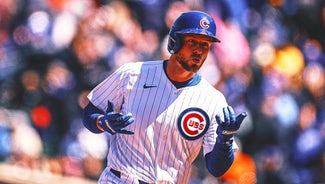





































































































































Bill James on Fielding, Part 7
Hey, if Bill keeps publishing these 2,000-word articles about his revised fielding metric, I'm going to keep swiping the best parts for 200-word blog posts...
There are 109 catchers since 1900 who have played 1,000 or more games at the position. The overall Defensive Winning Percentage of those 109 catchers, at catcher, is .681â€"22 points above the overall Defensive Winning Percentage of catchers, .659. This happens, of course, because good defensive catchers have longer careers at catcher than poor defensive catchers.
The mean Winning Percentage for the 109 1,000-game catchers is .681, with a Standard Deviation of .070. There are two catchers in history who are 2 standard deviations above the norm, and there are two catchers who are 2 standard deviations below the norm. Above the norm: Roy Campanella and Yadier Molina. Below the norm: Frankie (Blimp) Hayes and Ernie Lombardi.
Okay, so I don't think anyone's shocked by Ernie Lombardi or Blimp Hayes, or by Yadier Molina. But while I'm well aware of Roy Campanella's stellar reputation, I would not have expected him to rank No. 1 on a list like this.
So now we know what the numbers say, but I wondered what it was actually like to see Campanella in action. To find out, I asked Carl Erskine, who probably threw more pitches to Campy than anyone...
Rob, I guess I must have pitched a thousand innings to Roy.
Well, he had "savvy," whatever that is: instinct, street smarts, feel ... and yes, he could block pitches, never giving the runner a chance to advance. Of course he could throw, often picking runners off first base. After the pitch, the runner would often return to first base from his lead, and Campy would loop a soft, high toss to Hodges and WHAM.
We always went over the hitters together, and with an eight-team league we faced the seven other teams 22 times per season, 11 home and 11 away. So we faced the same hitters often -- I faced Musial 164 times -- which made it a mind game, and Campy was a master at calling the unexpected. Campy used to say to the young pitchers, "Now you just throw what I call and I'll make you a winner."
My locker was back-to-back with Campy's. I came in one day with a New York paper and showed Campy the box score. "This says Erskine losing pitcher," I said. "Shouldn't it say Campanella losing catcher?" He just smiled and said, "You can always shake me off." But if you shook off Campy, you had to explain it to Walter Alston, the manager.
I don't know Campy's stats, but he made us all better pitchers. He could make a pitcher pace himself. Young pitchers are always in a hurry, especially when in trouble. Without saying a word, Campy could control the tempo of the game. He made Newcombe a major-league pitcher. Newk was one of the early black players, and faced all the indignities Jackie and Campy did. But Campy was his father figure and Newk became a powerful pitchers.
Oh, and a side note: In the third playoff game with the Giants in 1951, Campy was hurt, so Rube Walker caught. When Dressen wanted to make a pitching change in the bottom of the ninth, two runners on base, he called the bullpen where Branca and I were throwing. Clyde Sukeforth, the coach, told Dressen we were both throwing okay but "Erskine is bouncing his overhand curve."
Campy used to say, "You bury it, I'll get it." Dressen, not wanting a wild pitch at the Polo Grounds (which had a long distance to the backstop), said, "Let me have Branca."
And the rest is history. -Carl
My thanks to the esteemed Carl Erskine, still throwing hard at 88.

MLB Buy or Sell: Braves fine sans Strider? Trout staying put? Phillies in trouble?

How Shohei Ohtani can grow — as a Dodger and personally — from the gambling saga

Shōta Imanaga, Colton Cowser headline MLB's 10 best rookies

Padres star Fernando Tatis Jr. has 50 custom cleats planned this season

20 Best pitchers in MLB 2024: Ranking the top 20 starters

A brief history of lifetime bans in professional team sports leagues

Reuniting Rickey Hill with his ring, 37 years later


MLB Buy or Sell: Braves fine sans Strider? Trout staying put? Phillies in trouble?

How Shohei Ohtani can grow — as a Dodger and personally — from the gambling saga

Shōta Imanaga, Colton Cowser headline MLB's 10 best rookies

Padres star Fernando Tatis Jr. has 50 custom cleats planned this season

20 Best pitchers in MLB 2024: Ranking the top 20 starters

A brief history of lifetime bans in professional team sports leagues

Reuniting Rickey Hill with his ring, 37 years later
